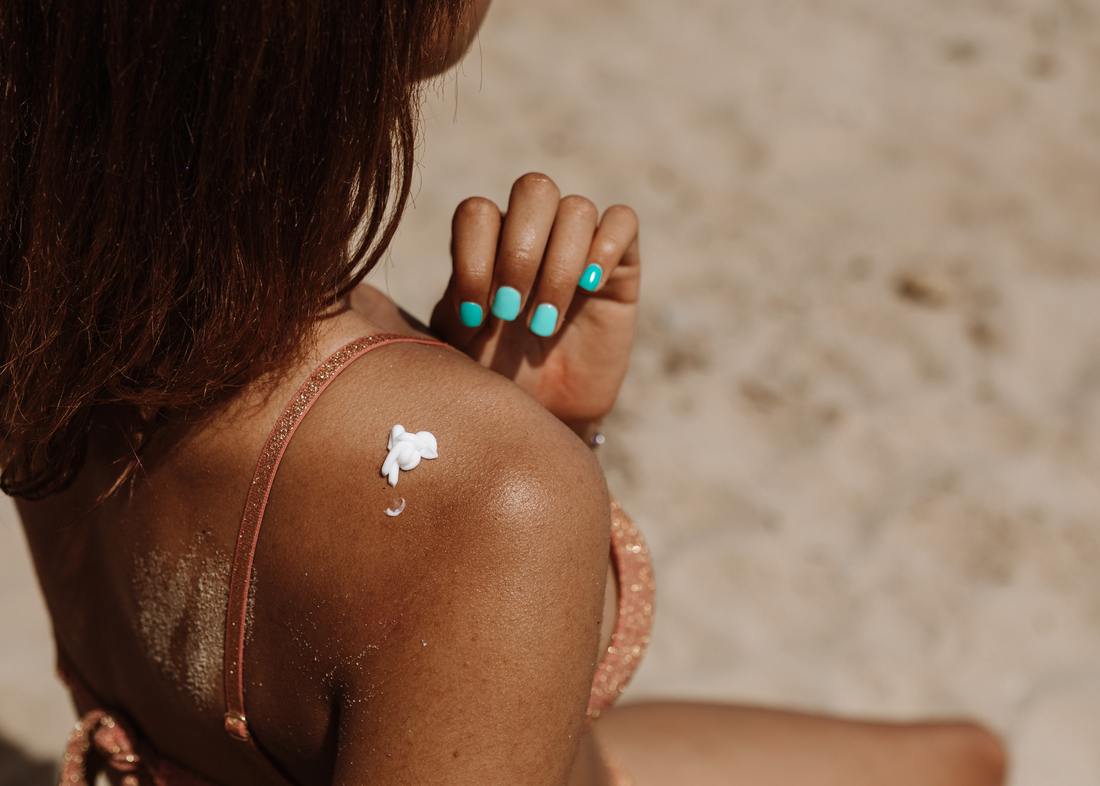As the weather warms up, let's talk about the ingredients found in your sunscreen. It's important to note that many commercial sunscreens contain harmful chemicals that can be absorbed by the body. While protecting our skin from UV rays is important, we should also pay attention to the ingredients we apply, especially when exposed to the sun.
Is your sunscreen toxic?
In 2019, a randomized clinical trial was conducted on sunscreen and the effects of four active ingredients (avobenzone, oxybenzone, octocrylene, and ecamsule) when absorbed by the skin.
During the trial they had 24 participants use commercial sunscreen over a period of 4 days. The results were alarming as the chemicals absorbed by the body were detected after a single use, with one participant discontinuing on day 2 due experiencing a rash. All 4 active ingredients commonly found in sunscreen exceeded the 0.5-ng/mL FDA limit.
In 2020 PMC came out with an article on the banned sunscreen ingredients and their impact on human health. This included the 2 active ingredients oxybenzone and octinoxate.
Overall, while sunscreen has its time and place, what is the price when major brands recall their products over health worries?
So what ingredients should you look out for? No worries, we’re here to help!
5 Ingredients To Avoid In Your Sunscreen.
1. Oxybenzone “Benzophenone-3”
Not only is this active banned in many countries, but also the State of Hawaii. Oxybenzone is an endocrine disrupter with studies showing it’s a greater harm to children. In a recent study Oxybenzone shown to significantly decrease testosterone levels in boys and increased risk of endometriosis in females. Hawaii banned oxybenzone due to its harmful effects of the coral reef and marine animals.
2. Parabens/Phthalates
Commonly found in products as methyl-, ethyl-, propyl-, isopropyl-, butyl-, and isobutylparaben. These synthetic compounds are endocrine disruptors, with parabens are being banned from the European Union. Both have been linked in decrease in fertility. Be aware that phthalates can still hide under the term "Fragrance”.
3. Monoethanolamine (MEA), Diethanolamine (DEA), and Triethanolamine (TEA)
Commonly found in baby/kid sunscreen. Theses ingredients can be used for either surfactants, cleansers, or preservatives. The california environmental protection agency deemed them as possible carcinogen due to it being an endocrine disruptor. DEA and TEA can not processed or eliminated from the liver or kidneys.
A report published by the International Journal of Toxicology by the American College of Toxicology found:
"The Panel concludes that TEA, DEA, and MEA are safe for use in cosmetic formulations designed for discontinuous, brief use followed by thorough rinsing from the surface of the skin. In products intended for prolonged contact with the skin, the concentration of ethanolamines should not exceed 5%. MEA should be used only in rinse-off products. TEA and DEA should not be used in products containing N-nitrosating agents."
4. Octocrylene
Is known for its harmful effects to the coral reef and for being absorbed by the skin 14 times the FDA cut off for systemic exposure. Octocrylene is an endocrine disruptor and it's often contaminated with the known carcinogen benzophenone.
5. Benzene
Commonly found in aerosol sunscreens, and is a well-studied chemical, recognized as carcinogenic by regulatory bodies that include the FDA and Centers for Disease Control and Prevention. A study showed that benzene is absorbed at especially high rates when sunscreen is applied.
So what can we do?
I want to start off with we shouldn't be afraid of the sun. Getting proper sun exposure is the best and most effective way to get vitamin D that helps our body properly function. After all vitamin D is really a hormone.
Now there is a time and place to use sunscreen, and this is what you can do to help protect your skin during peak hours of the sun when the UVB and UVA is at its strongest.
Read ingredient labels to make informed choices.
If you're unsure about an ingredient, search it on Google. If the sunscreen you're considering has a long list, it probably contains unsafe ingredients. Opt for mineral sunscreens with ingredients like NON-nano zinc oxide which is considered a safer alternative to chemical sunscreens.
This is why we formulated a safer alternative to chemical sunscreen. Our mineral based Sunkissed Sun Moisturizer contains non-nano zinc oxide that won't penetrate into the skin, but rather shield the skin from UVB and UVA rays. It's also crafted with a blend of natural ingredients that support and nourish the skin, suitable for the entire family to use.
Sunkissed Sun Moisturizer has
NO Oxybenzone
NO Octinoxate
NO Chemicals
NO Parabens
NO Petroleum
NO Nanoparticles
And is
Coral Reef SAFE
Kid Safe
Non-GMO
Clean + Natural Ingredients for your skin health.
By choosing a non-toxic sunscreen, you can protect your skin while also safeguarding your health.
This is not medical advice.

